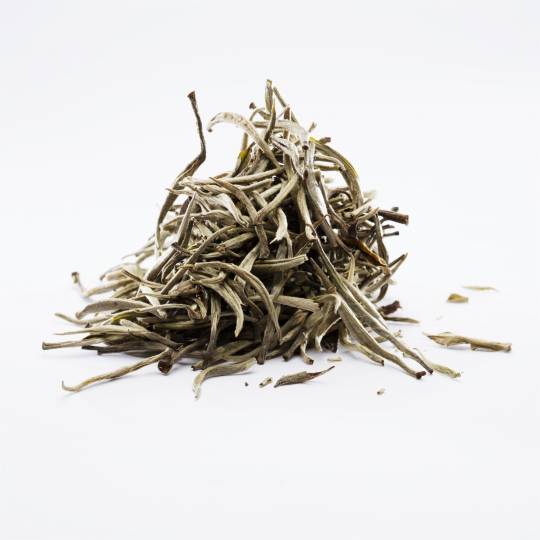More about: White Tea
White tea originally comes from a small, restricted area in southeastern China, where you find the ideal growing conditions for growing white tea and for the development of white tea. The white teas have their names from different varieties of tea plants, as well as from the particular way these teas are harvested, leaving the small silvery down on the leaves and buds visibly intact. Today, fine qualities of white tea are also produced. India and Sri Lanka, e.g. from the tea districts of Assam, Darjeeling and Ceylon. The Chinese white teas come from 3 plant varieties: 'Big white Tea', 'Nacissus White' and 'Vegetable White'. Depending on the quality and type, the color of the tea leaves as well as the brewed tea may vary from a light yellow or green color to a dark brown color. White tea is the first tender shoot on the bush and a delicacy, harvesting only a few days in early spring. The tea leaves are not picked on days of rain if the dew is not completely gone or if there is frost in the soil. White tea differs from both green and black tea in the process that follows the actual picking of the tea leaves. The fresh tea leaves undergo a natural drying process. The white tea, like the green tea, is unfermented, which means that the tea leaves do not undergo the oxidation process which causes the color of the tea leaves to darken. The tea leaves, unlike the other teas, are very rarely rolled. Thus, the characteristics of most qualities are that they are very large-leaved. The big difference between white and green tea is the way the tea is made. To make white tea, the pickers pick the bud and two leaves together and distribute them in four different grades which make up the 3 types of white tea; Bai Hao Yin Shen (Silver Needle), Bai Mu Dan (White Peony), Shou Mei and Gong Mei. Unlike the preparation of the green teas, which are exposed to relatively high temperatures to remove the moisture content of the teas, white tea is naturally dried by using the sun's rays, or by a drying process under lower temperatures, which takes place indoors. to ensure that the polyphenol content of the tea is preserved. The preferred method is to dry the white tea in the sun which speeds up the drying process. However, there is not always enough sun for this method to be used. It takes about 40 hours to dry the white tea at low temperatures indoors. After the tea has been dried in uncovered open sheds, it is placed in rows of bamboo inside rooms that are heated to about 40 degrees. The rooms are well ventilated to remove the moisture content.



